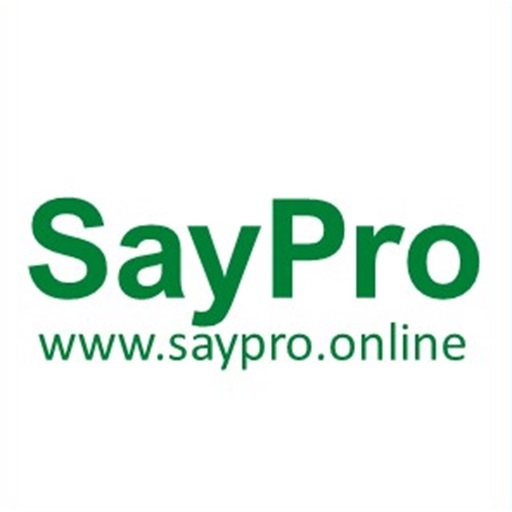Your cart is currently empty!
SayPro Establish an inspection and review process.
InspectionThe inspection as described in the IEEE standard is basically the same as the Fagan Inspection, as invented and described by Michael Fagan in 1976. Compared to the technical review there is more formalism and more roles are involved. Further down you will find a comparison and discussion of these review techniques so I will […]
Description
InspectionThe inspection as described in the IEEE standard is basically the same as the Fagan Inspection, as invented and described by Michael Fagan in 1976. Compared to the technical review there is more formalism and more roles are involved. Further down you will find a comparison and discussion of these review techniques so I will not go into details here. The only thing which needs to be pointed out at this place, is that the IEEE standard states that the inspection should be done according to the project plan. It is usually not just done on demand. Further there is an explicit reference to the software verification and validation plan where the inspections should be reflected. An inspection is therefore regarded as a proper testing activity rather than an activity to evaluate a work product for suitability. The IEEE standard says that the following roles shall be established for the inspection:
|
According to the IEEE standard the input to the inspection shall include the following:
|
Again here I have a description of the inspection procedure in a diagram. In the following flow chart you find the steps of the inspection, the expected inputs i.e. work product and other documents, and a rough description of each process step in the comment boxes:Comparison of Inspections and ReviewsAs you can see from the diagrams a technical review in not the same as an inspection. There are big differences and I want to summarize them in the following table:
| Issue | Technical Review | Inspection |
| Objective | Determine the suitability of a work product for it’s intended use. | Determine the suitability of a work product for it’s intended use, but beyond that search for anomalies by examination through educated inspectors. |
| Roles | A minimum of two persons is required. Each one of them can assume multiple roles. Since the scope is different additional persons e.g. management or customer representative can participate, but this is not regarded as a role in the process. | Additionally required roles are the Author and the Reader. The roles are explicitly separated and can not be assumed by one person. |
| Input | The inputs are very similar than the ones of the inspection. It has to be observed that check lists are not mentioned i.e. not required. | Additional inputs are: Inspection reporting forms, Inspection check lists, Hardware product specifications, Hardware performance data. Some of these inputs are optional. The reporting form is mandatory as well as the inspection check list. The wording of the standard would suggest that check lists are not mandatory, however a table in the appendix of the standard makes them mandatory. |
| Output | The only output is an Action Item List and a record (meeting minutes) of the technical review. | The outputs are a formal inspection report, a formal defect summary and a defect list with classified defects. The emphasis is on providing a standard output of found errors which also would allow statistical evaluations. |
| Entry Criteria for theMeeting | No special criteriamentioned. | It is explicitly stated that the meeting has to be re-scheduled if the inspection leader finds that the participants are not well prepared. |
| Meeting | Keep the described rules of a review meeting. | The defined roles have to be explicitly kept. The reader and not the author will present the material. The other roles also have to be formally kept. |
| Outcome of theMeeting | Generate of the definedreview report. | At the end of the inspection the decision has to be made to accept the work product, close the inspection, but require a rework, reject the work product and require a re-inspection after the rework is done. |
There are some additional things to be observed. According to the standard the inspection leader has to have a formal training about the inspection process. Further from practical experience it can be determined that an inspection or review meeting should not be longer than 2 hours. After that time the quality of the inspection or review decreases. Another rule is that in an inspection you should cover a maximum of 100 lines of code per hour and a maximum of 400 lines of code per day.Please visit our website at www.saypro.online Email: info@saypro.online Email: info@saypro.online Call: + 27 11 071 1903 WhatsApp: + 27 84 313 7407. Comment below for any questions and feedback. For SayPro Courses, SayPro Jobs, SayPro Community Development, SayPro Products, SayPro Services, SayPro Consulting, and SayPro Advisory visit our website to www.saypro.online
You must be logged in to post a review.

Reviews
There are no reviews yet.